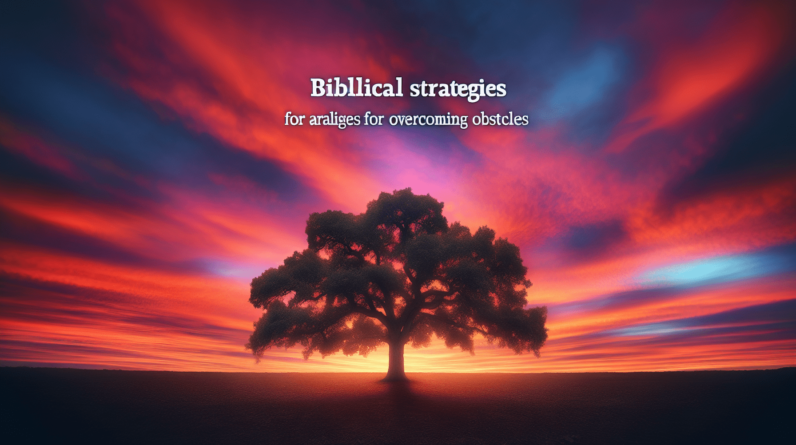In the inspiring tale of Esther, we discover an extraordinary story that imparts valuable lessons on courage and bravery. This captivating narrative tells of a young Jewish woman who finds herself in a precarious position, facing a decision that could potentially alter the course of history. As we navigate through the twists and turns of Esther’s story, we are reminded of the immense courage it takes to stand up for what we believe in, even in the face of adversity and uncertainty. Through her unwavering determination and fearless actions, Esther becomes a shining example of how bravery can triumph over fear, and how one individual can make a profound impact on their community and beyond.
This image is property of images.unsplash.com.
Main Characters in the Story of Esther
Esther
Esther is the protagonist of the story, a young Jewish woman who becomes the queen of Persia. Despite her difficult background as an orphan, Esther exhibits immense courage and determination throughout the narrative.
Mordecai
Mordecai is Esther’s cousin and father figure. He plays a crucial role in advising and supporting Esther, showing unwavering loyalty and bravery in the face of danger. Mordecai’s refusal to bow to the villainous Haman symbolizes his commitment to his faith and principles.
Haman
Haman serves as the primary antagonist in the story. He is a high-ranking official in the Persian empire and harbors a deep hatred for the Jewish people. Haman’s plot to annihilate the Jews demonstrates his wickedness and thirst for power.
King Ahasuerus
King Ahasuerus is the ruler of Persia, known for his extravagant lifestyle and lack of discernment. Though not inherently villainous, his actions and choices have significant consequences for the characters in the story.
Understanding the Story of Esther
The setting and historical context
The story of Esther takes place in the Persian Empire during the reign of King Ahasuerus. It provides a glimpse into the lives of the Jewish community living in exile and facing persecution. The narrative unfolds in Susa, the capital city of Persia, and highlights the political and cultural complexities of the time.
Plot summary
Esther is chosen to participate in a selection process to become the new queen after King Ahasuerus dismisses his previous queen, Vashti. With the guidance of her cousin Mordecai, Esther conceals her Jewish identity. When Haman, the king’s advisor, orchestrates a plan to exterminate the Jewish people, Mordecai urges Esther to use her position to appeal to the king and save their people. Esther hesitates due to the potential consequences but ultimately gathers the courage to approach the king and expose the wicked plot. Through a dramatic turn of events, Haman’s plan is foiled, and the Jewish people are saved.
Key events
Several key events shape the course of the story. Firstly, the queen’s dismissal leads to Esther’s selection as the new queen. Mordecai’s uncovering of a plot to assassinate King Ahasuerus plays a pivotal role, leading to his recognition by the king. Haman’s rise to power and his plan to annihilate the Jews adds suspense and tension. Esther’s decision to approach the king despite his law forbidding such actions sets the stage for the climax of the story. Ultimately, Haman meets his downfall, and Esther’s bravery and faith save her people.
Examining Esther’s Courage
Esther’s journey from orphan to queen
Esther’s background as an orphan could have limited her prospects, but through her courage and determination, she rises to become the queen of Persia. Despite the challenges she faces, Esther maintains her composure and remains steadfast in her faith and purpose.
Her decision to approach the king
Esther’s decision to risk her life and approach King Ahasuerus, despite the law forbidding such actions, demonstrates her unmatched bravery. She understands that by doing so, she can expose the plot against her people and potentially save them from annihilation.
Facing potential consequences
Esther’s bravery is further amplified by the potential consequences she faces. Approaching the king without being summoned could result in her death. However, she embraces the risk, knowing that it is her responsibility to save her people. Esther’s unwavering courage in the face of danger is a testament to her selflessness and determination.
Lessons on Bravery from Mordecai
Mordecai’s refusal to bow to Haman
Mordecai’s refusal to bow to Haman embodies his unwavering commitment to his faith and principles. While others may have succumbed to pressure and fear, Mordecai’s bravery sets him apart. His defiance serves as a powerful lesson on standing firm in the face of wickedness and refusing to compromise one’s values.
His loyalty to Esther
Mordecai’s loyalty to Esther demonstrates the importance of supporting and encouraging others in their moments of weakness. Despite the risks, Mordecai urges Esther to take action, believing in her ability to make a difference. His unwavering support highlights the transformative power of steadfast loyalty and its role in fostering courage.
Taking action against a powerful enemy
Mordecai’s active involvement in uncovering the plot against the Jews showcases the necessity of taking bold action against oppressive forces. By going against Haman’s authority and exposing his true intentions, Mordecai sets a powerful example of how courage and determination can pave the way for justice and liberation.
This image is property of images.unsplash.com.
Analyzing Haman’s Villainy
Haman’s plot and manipulation
Haman’s villainy begins with his manipulation of King Ahasuerus to issue an edict to exterminate the Jewish people. His twisted desire for power and his deep-seated hatred towards the Jews drive him to orchestrate a plan that would bring further suffering and devastation to a vulnerable community.
His disregard for consequences
Haman’s actions throughout the story reveal his utter disregard for the consequences of his decisions. Instead of considering the lives at stake, he remains focused on fulfilling his own selfish desires. His villainous nature is characterized by his callousness and lack of remorse for the harm he intends to inflict.
The contrast with Esther and Mordecai
Haman’s villainy stands in stark contrast to the bravery and righteousness of Esther and Mordecai. While Haman seeks to destroy, Esther and Mordecai strive to save lives and promote justice. The stark juxtaposition between these characters emphasizes the significance of courage and morality in the face of evil.
The Role of Faith in Esther’s Courage
Esther’s reliance on God
Esther’s faith in God anchors her courage throughout the story. She recognizes that she is part of a larger plan and places her trust in divine guidance. Esther’s unwavering belief that God will provide the strength and wisdom she needs fuels her determination in the face of adversity.
Utilizing prayer and fasting
Esther’s reliance on prayer and fasting demonstrates her commitment to seeking divine intervention. She recognizes the power of these spiritual practices in preparing herself mentally, emotionally, and spiritually for the challenges she will encounter. Esther’s disciplined approach reflects the importance of nurturing one’s faith and seeking guidance in times of difficulty.
Trusting in divine providence
Esther’s courage is also rooted in her trust in God’s divine providence. She understands that her role in the story is not a coincidence but a part of a grander plan. Esther’s faith allows her to persevere, even when doubt and uncertainty arise, knowing that God’s will shall prevail.
This image is property of images.unsplash.com.
Courageous Actions in the Face of Adversity
Challenging societal norms
The story of Esther exemplifies the power of challenging societal norms. Esther’s decision to approach King Ahasuerus, defying the law against such actions, represents a rebellion against the oppressive norms of her time. Her bravery encourages individuals to question unjust rules and norms and take action to promote positive change.
Standing up against injustice
Esther’s story teaches us the importance of standing up against injustice, even when it may seem daunting. By exposing Haman’s plot and advocating for her people, Esther embodies the courage needed to confront and address systemic injustices. Her actions inspire individuals to speak out against oppression and work towards a more just society.
Risking everything for the greater good
Esther’s willingness to risk her own life for the greater good serves as a powerful reminder of the transformative power of selflessness. She puts her own safety and well-being on the line to save her people, displaying unmatched bravery and sacrificing personal comfort for the sake of others. Esther’s actions motivate individuals to prioritize the welfare of others and make courageous choices, even when doing so entails personal sacrifice.
Defying Authority for the Righteous Cause
Esther’s disobedience to the law
Esther’s disobedience to the law against approaching the king without being summoned showcases the importance of challenging authority when it compromises one’s moral principles. Her act of defiance highlights the need to question immoral laws and take action in pursuit of justice, even when it means going against established authority.
Questioning immoral commands
The story of Esther provides a lesson on the significance of questioning immoral commands. Mordecai’s refusal to bow to Haman serves as an example of the importance of discernment and refusing to blindly comply with orders that contradict one’s values. By standing up against Haman’s unjust demand, Mordecai demonstrates the power of individual conviction and the responsibility to resist immoral authority.
Resistance against oppressive power
Esther’s courage also centers on her resistance against the oppressive power of Haman and his unjust edict. Her refusal to passively accept the decree that would lead to the annihilation of her people signifies the need to oppose oppressive forces and fight for freedom and dignity. Esther’s story encourages individuals to resist and challenge oppressive power structures for the sake of righteousness.
Consequences and Rewards of Courage
Dangers and sacrifices faced by Esther and Mordecai
Esther and Mordecai’s courageous actions come with considerable risks and sacrifices. Esther puts her life on the line by approaching the king without being summoned, while Mordecai faces persecution for refusing to bow to Haman. The story highlights the potential dangers and personal sacrifices that accompany acts of bravery, emphasizing the immense strength and conviction required to face them.
Overcoming fear and doubt
The story of Esther reveals the transformative power of courage in overcoming fear and doubt. Esther initially hesitates to approach the king out of fear for her life, but she finds the strength to face her fear and carry out her mission. Mordecai’s steadfast support and Esther’s unwavering faith help them overcome their doubts and move forward in their courageous endeavors.
Reaping the fruits of bravery
The rewards of courage are evident in the story of Esther. Through her bravery, Esther saves her people from annihilation and brings about justice. Her actions lead to the downfall of Haman and the preservation of the Jewish community. The story teaches us that courage yields positive outcomes and has the power to transform lives and circumstances for the better.
Application of the Lessons in Modern Life
Drawing inspiration from Esther’s story
The story of Esther provides a source of inspiration for individuals facing their own challenges. Esther’s courage and determination in the face of adversity can serve as a reminder that, no matter how daunting a situation may seem, bravery can lead to meaningful change and a positive outcome.
Finding courage in personal challenges
Esther’s story encourages individuals to cultivate courage in their own lives, even in the face of personal challenges. Whether it be navigating a difficult decision, standing up against injustice, or taking risks for a greater cause, Esther’s example reminds us that bravery is within our reach and that our actions can make a difference.
Promoting justice and bravery in society
The lessons from the story of Esther can be applied to promoting justice and bravery in society. By speaking out against injustice, challenging oppressive power structures, and supporting those in need, individuals can contribute to creating a more just and courageous society. Esther’s story serves as a call to action, urging us to prioritize bravery and righteousness in our interactions and pursuits.










